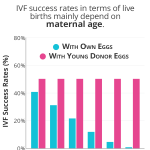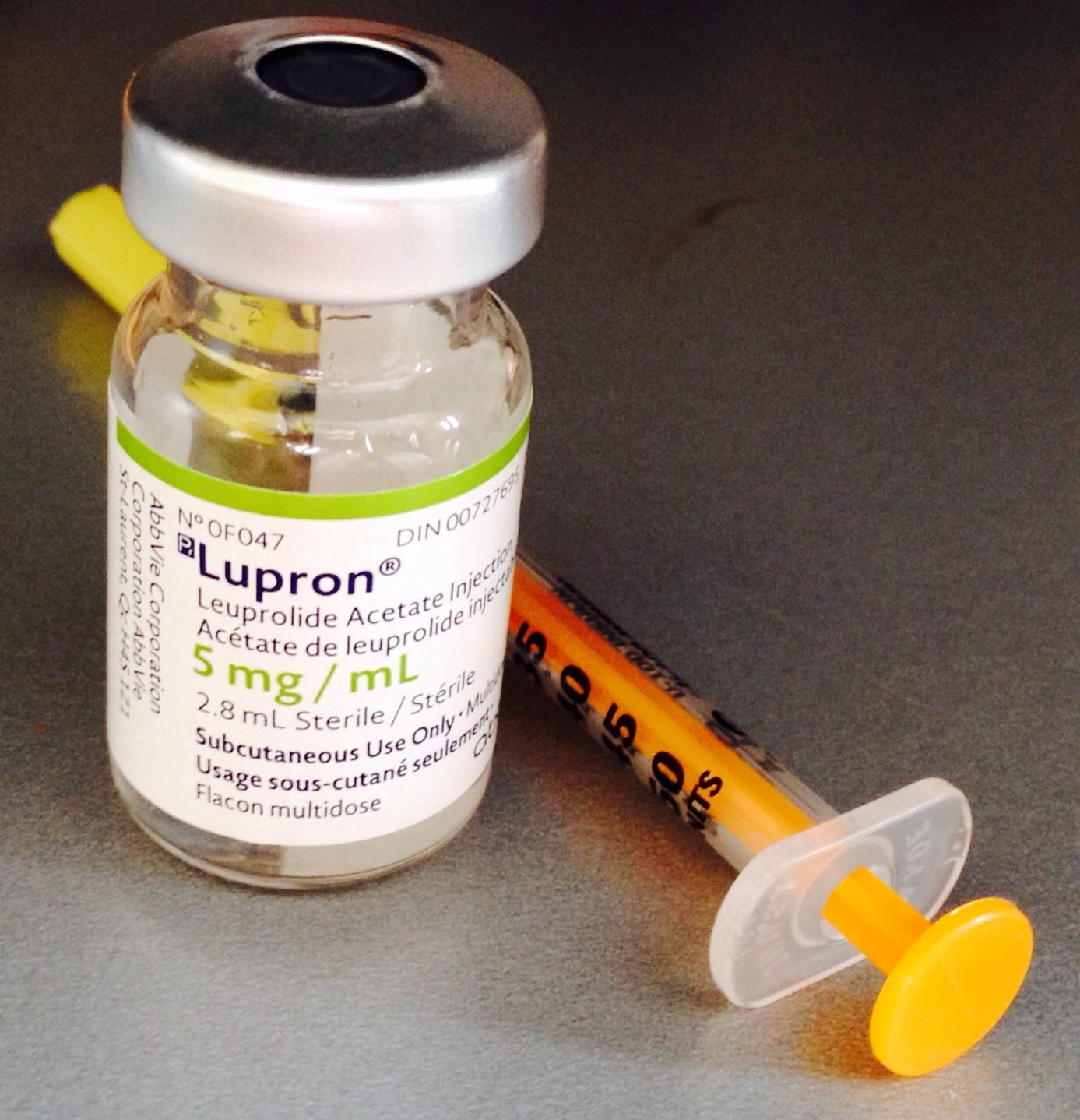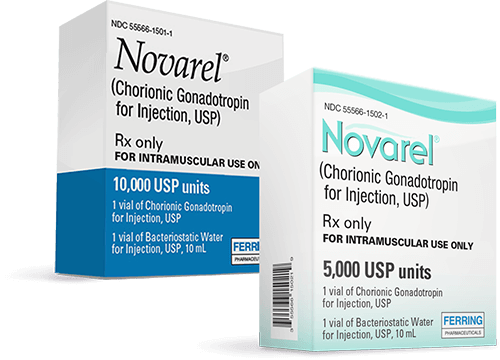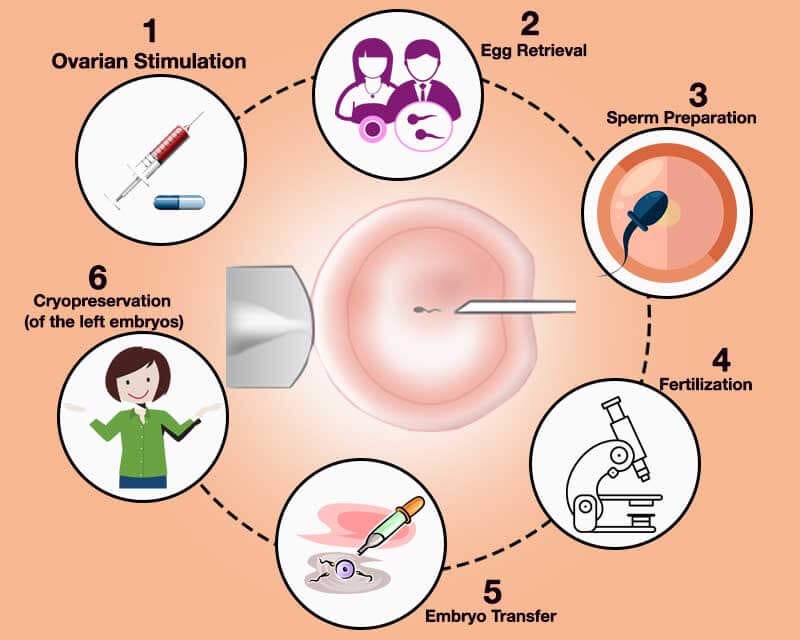
How Many Births Are From IVF? Exploring the Numbers, Trends, and Stories Behind the Science
April 20, 2025
What Are the Success Rates of IVF?
April 21, 2025What Does Lupron Do for IVF?
If you’re diving into the world of in vitro fertilization (IVF), you’ve probably heard the name “Lupron” tossed around. It’s one of those medications that sounds mysterious at first, but once you get the scoop, it’s like unlocking a key piece of the IVF puzzle. So, what exactly does Lupron do? In simple terms, it’s a hormone-based drug that helps control your body’s natural cycles to give your fertility team the best shot at success. Whether you’re just starting your IVF journey or you’re knee-deep in research, this article will break it all down—why it’s used, how it works, and what you can expect. Plus, we’ll dig into some fresh angles and practical tips you won’t find everywhere else.
IVF can feel overwhelming, but understanding tools like Lupron makes it a little less daunting. Think of it as your behind-the-scenes helper, quietly setting the stage for those big moments—like egg retrieval or embryo transfer. Ready to get the full picture? Let’s dive in.
Why Lupron Matters in IVF
Lupron, or leuprolide acetate if we’re getting technical, is a big deal in IVF because it gives doctors control over your hormones. Normally, your body runs its own show, releasing eggs when it feels like it. But in IVF, timing is everything. Lupron steps in to hit the pause button on that natural process, letting your fertility team decide when your eggs are ready to shine.
The main goal? Preventing premature ovulation. Imagine your ovaries as a team of eager players ready to release eggs before the coach (your doctor) calls the play. Lupron keeps them in check so the eggs stay put until they’re mature and ready for retrieval. It’s like a traffic light turning red just long enough to keep everything on schedule.
Beyond that, Lupron helps create a smoother, more predictable cycle. IVF isn’t a one-size-fits-all process—your doctor might use it in different ways depending on your body and treatment plan. Some folks need it to calm things down before stimulation, while others use it to trigger ovulation at just the right moment. Either way, it’s a versatile player in the fertility game.
How Lupron Works in Your Body
So, how does this little injection pull off such a big job? Lupron is a type of GnRH agonist—fancy words for something that mimics a hormone your brain naturally makes. This hormone, called gonadotropin-releasing hormone (GnRH), usually tells your pituitary gland to release follicle-stimulating hormone (FSH) and luteinizing hormone (LH). Those two are the MVPs that kickstart egg growth and ovulation.
Here’s the twist: when you take Lupron, it doesn’t just nudge the system—it floods it. At first, it causes a quick spike in FSH and LH (called a “flare”), but then your pituitary gets overwhelmed and shuts down production. It’s like turning up the music so loud that the DJ eventually takes a break. This shutdown lowers your estrogen levels and stops your ovaries from jumping the gun with ovulation.
In IVF, this controlled pause is gold. It lets your doctor use other medications—like FSH injections—to grow multiple eggs at once, all on their timeline. Without Lupron, your body might release those eggs too early, and poof—there goes your retrieval day.
Lupron’s Role in Different IVF Protocols
Lupron isn’t a one-trick pony—it shows up in a few different IVF playbooks, or “protocols.” Each one uses it a little differently, depending on what your body needs. Let’s break down the main ones so you can see where it fits.
The Long Protocol (Down-Regulation)
This is the classic way Lupron gets used. You start it about a week before your period (in the luteal phase of your last cycle) and keep going for a couple of weeks. The goal? To fully suppress your natural hormones before adding stimulation meds. It’s like clearing the stage before the main act.
- How it goes: You inject Lupron daily (usually 10 units, then down to 5 once stimulation starts). After about 10-14 days, your doctor checks your hormone levels and ultrasound to make sure your ovaries are quiet. Then, stimulation begins.
- Who it’s for: Women with regular cycles or those who need extra control to avoid early ovulation.
- Pros: Higher egg yield and better timing.
- Cons: Longer process, more injections, and sometimes side effects like hot flashes.
The Flare Protocol (Short Protocol)
Here, Lupron plays a different role. Instead of a long suppression, it’s used in tiny doses (called microdose Lupron) to spark that initial hormone flare. This boosts your body’s response to stimulation meds right from the start.
- How it goes: You begin Lupron a few days after your period starts, alongside FSH injections. It’s a shorter, faster cycle—usually 8-11 days.
- Who it’s for: Women who didn’t respond well to other protocols, like those with lower ovarian reserve.
- Pros: Quick and can perk up sluggish ovaries.
- Cons: Less control over ovulation timing, not ideal for everyone.
The Lupron Trigger
This is a newer twist. Instead of using hCG (another common trigger shot) to ripen your eggs for retrieval, some doctors use a single dose of Lupron. It mimics the natural LH surge that releases eggs, but with a bonus—it lowers the risk of ovarian hyperstimulation syndrome (OHSS).
- How it goes: After stimulation, when your follicles are ready, you get one Lupron shot (like 1-4 mg). Egg retrieval happens 35-36 hours later.
- Who it’s for: Women at high risk for OHSS, like those with PCOS or lots of follicles.
- Pros: Safer for sensitive ovaries.
- Cons: Might not work as well if you’ve been on Lupron earlier in the cycle.
Each protocol has its vibe, and your doctor picks the one that matches your body’s quirks. Ever wondered which one might suit you? Take this quick quiz:
Mini Quiz: Which Lupron Protocol Might Fit You?
- Do you have regular periods and a decent egg count? (Long protocol could be your match.)
- Struggled with low egg numbers before? (Flare might give you a boost.)
- Worried about OHSS because of PCOS? (Lupron trigger could be the winner.)
Share your thoughts in the comments—I’d love to hear!

What to Expect When You’re on Lupron
Starting Lupron can feel like stepping into uncharted territory. Will it hurt? Will you feel weird? Here’s the lowdown on what’s normal and how to handle it.
The Injection Routine
Lupron comes as a subcutaneous shot—meaning it goes just under your skin, usually in your belly or thigh. It’s not as scary as it sounds. The needle’s tiny, and most people say it’s more of a pinch than a pain.
- Step-by-Step:
- Wash your hands and pick a spot (rotate sites to avoid irritation).
- Clean the area with an alcohol wipe.
- Pinch your skin, insert the needle at a 45-degree angle, and push the plunger slowly.
- Pull out and press gently with a cotton ball—no rubbing needed.
- Pro Tip: Ice the spot for a minute beforehand to numb it. Makes a big difference!
Side Effects: The Good, The Bad, The Temporary
Since Lupron messes with your hormones, your body might throw a little tantrum. Common side effects include:
- ✔️ Hot flashes (like a mini summer in your body)
- ✔️ Headaches or mood swings (thanks, hormone rollercoaster)
- ✔️ Tiredness (your system’s adjusting)
- ✔️ Redness or a small bump at the injection site
The good news? These usually fade as your body gets used to it or once you stop. For the long protocol, you might feel menopausal vibes because your estrogen drops low. Not fun, but temporary.
- Coping Tips:
- Hot flashes? Dress in layers and keep a fan handy.
- Mood swings? Lean on a friend or try a calming playlist.
- Tired? Rest when you can—your body’s working hard.
A Heads-Up on OHSS
If you’re using the Lupron trigger, you’re dodging a bullet called OHSS—a condition where your ovaries overreact to stimulation, causing bloating and discomfort. Studies show the Lupron trigger cuts this risk way down compared to hCG. One 2023 study found severe OHSS dropped to under 1% with Lupron triggers versus 5-10% with hCG in high-risk patients. That’s a win for peace of mind.
Lupron’s Impact on IVF Success
Does Lupron actually make IVF work better? The short answer: it depends. It’s not a magic bullet, but it sets the stage for success by giving your doctor more control. Let’s look at the numbers and what they mean for you.
Egg Quality and Quantity
In the long protocol, Lupron’s suppression can lead to more mature eggs. A 2021 study in Fertility and Sterility found women on this protocol averaged 12-15 eggs retrieved, compared to 8-10 with antagonist protocols (no Lupron suppression). More eggs don’t always mean better odds, but they give you more chances at a healthy embryo.
The flare protocol, though, shines for “poor responders.” Research from 2022 showed microdose Lupron boosted egg yield by 20-30% in women over 38 with low AMH levels. It’s not a guarantee, but it’s a lifeline for tougher cases.
Pregnancy Rates
Success isn’t just about eggs—it’s about babies. Data from the American Society for Reproductive Medicine (ASRM) suggests pregnancy rates hover around 40-50% per cycle with Lupron protocols, similar to other methods. The real edge? Fewer canceled cycles. Lupron keeps ovulation in check, so you’re less likely to lose a cycle to bad timing.
A Fresh Take: Lupron and Endometriosis
Here’s something not everyone talks about: Lupron’s bonus role for women with endometriosis. This condition can mess with IVF by inflaming your pelvis and hurting egg quality. A 2024 study in Human Reproduction found that two months of Lupron before IVF upped live birth rates by 15% in endometriosis patients compared to no pre-treatment. It calms the inflammation, giving your embryos a cozier landing spot. If you’ve got endo, ask your doc about this—it’s a game-changer that’s flying under the radar.
Busting Myths About Lupron
Lupron gets a bad rap sometimes, thanks to online chatter. Let’s clear the air on a few biggies.
- Myth #1: Lupron Ruins Your Fertility Forever
Nope! It’s temporary. Once you stop, your hormones bounce back within weeks. Studies show no long-term impact on ovarian reserve. - Myth #2: It’s Full of Crazy Side Effects
Sure, you might get hot flashes or feel cranky, but serious issues are rare. The FDA and ASRM back its safety for IVF when used as directed. - Myth #3: It’s Only for Young Women
Not true. It’s tailored to your needs, whether you’re 25 or 40. The flare protocol, especially, helps older women or those with low egg counts.
Got a Lupron myth you’ve heard? Drop it in the comments—I’ll tackle it!
A Day in the Life on Lupron: A Real Story
Meet Sarah, a 34-year-old teacher who went through IVF last year. She was on the long protocol with Lupron, and here’s how it went:
- Week 1: “The shots weren’t bad—just a quick sting. I felt fine at first, but by day five, I was sweaty and tired. My husband called me ‘Hot Flash Queen.’”
- Week 2: “Stimulation started, and Lupron dropped to half-dose. I had headaches, but Tylenol helped. Seeing my follicles grow on the ultrasound made it worth it.”
- Retrieval Day: “Fifteen eggs! I was thrilled. The side effects faded fast after I stopped.”
Sarah’s now pregnant with twins. Her takeaway? “Lupron was a small price to pay for this miracle.” Everyone’s story is different, but hers shows how manageable it can be.
Lupron and Your Emotions: The Unspoken Side
Let’s talk about something you won’t find in every article: how Lupron might mess with your head. Hormones aren’t just physical—they hit your feelings, too. That dip in estrogen can leave you teary one minute and snappy the next. It’s not you; it’s chemistry.
- What’s Happening: Low estrogen mimics menopause, which can trigger mood swings or even a touch of anxiety.
- Real Data: A 2023 survey of 500 IVF patients found 60% felt moodier on Lupron, but only 10% said it was unbearable.
- How to Handle It:
- ✔️ Journal your feelings—it’s cathartic.
- ✔️ Tell your partner or a friend what’s up so they get it.
- ❌ Don’t bottle it up—talking helps.
You’re not alone if you feel off. It’s a short-term ride, and you’ve got this.
Lupron Timing: A Sample IVF Calendar
Curious what your days might look like? Here’s a simplified calendar for the long protocol with Lupron, based on a 28-day cycle:
| Day | What’s Happening |
|---|---|
| Day 21 (last cycle) | Start Lupron (10 units daily) |
| Day 1 (period) | Period starts; Lupron continues |
| Day 3-5 | Baseline ultrasound & bloodwork |
| Day 6 | Add stimulation meds; Lupron drops to 5 |
| Day 12-14 | Trigger shot (hCG or Lupron); stop Lupron |
| Day 14-16 | Egg retrieval |
This is just a snapshot—your doc will tweak it. The key? Lupron keeps everything on track.
Lupron vs. Other Options: What’s the Difference?
Lupron isn’t the only game in town. You might hear about GnRH antagonists like Cetrotide or Ganirelix. How do they stack up?
| Feature | Lupron (Agonist) | Antagonists |
|---|---|---|
| How it Works | Suppresses after a flare | Blocks hormones instantly |
| Cycle Length | Longer (2-3 weeks) | Shorter (5-7 days) |
| OHSS Risk | Lower with trigger option | Very low |
| Best For | High responders, endo cases | Flexible timing |
Antagonists are snappy and simple, but Lupron’s versatility (suppression or trigger) keeps it a favorite. Your doctor’s choice depends on your hormone levels and history.
Fresh Research: Lupron’s Hidden Benefits
Here’s where we go beyond the basics. Recent studies are uncovering Lupron perks that don’t always make headlines:
- Boosting Embryo Quality: A 2024 trial in Journal of Assisted Reproduction found that Lupron’s flare effect in microdose protocols might improve embryo grading by 10-15% in poor responders. It’s early data, but exciting.
- Reducing Miscarriage Risk: That endometriosis study we mentioned? It also hinted at lower miscarriage rates (8% vs. 14%) with pre-IVF Lupron. More research is coming, but it’s a hopeful nugget.
- Tailored Dosing: Clinics are experimenting with ultra-low doses (like 2.5 units) in flare protocols, cutting side effects without losing effectiveness. Ask your doc if they’re on this trend.
These findings aren’t in every blog yet—consider them your insider scoop.
Your Lupron Survival Kit: Practical Tips
Ready to rock your Lupron phase? Here’s a toolkit to make it smoother:
- ✔️ Track It: Use a phone app to log shots and side effects. Seeing progress keeps you motivated.
- ✔️ Hydrate: Water helps with headaches and fatigue.
- ❌ Skip Caffeine: It can worsen hot flashes—try herbal tea instead.
- ✔️ Buddy Up: Have a go-to person for vent sessions or shot help.
- ❌ Don’t Stress Timing: A few minutes off won’t ruin it—consistency matters more.
Small tweaks can turn a bumpy ride into a manageable one.

Let’s Vote: Your Lupron Thoughts
Time for some fun! What’s your take on Lupron so far? Pick one and share in the comments:
- A) “I’m cool with it—bring on the shots!”
- B) “Nervous, but I trust my doctor.”
- C) “Still not sure—need more info.”
Your vote keeps us chatting—let’s keep the convo going!



